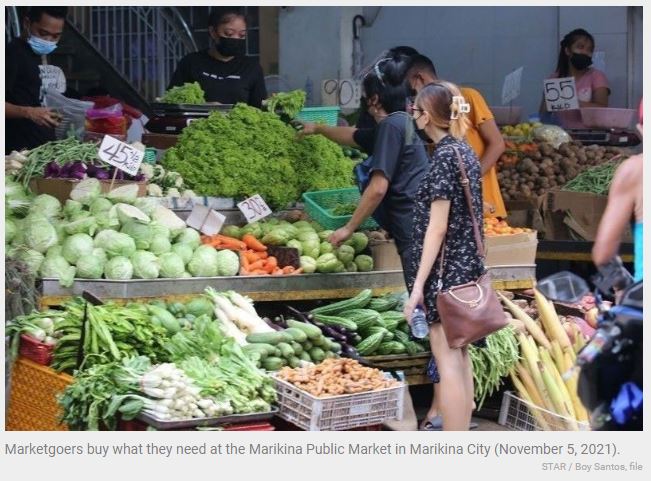Philippines: Rising inflation raises borrowers’ default risks
MANILA, Philippines — A rapid rise in inflation may raise borrowers’ default risks in the Philippines, according to Moody’s Investors Service.
In a report, the debt watcher said an acceleration in inflation has historically resulted in increases in non-performing loans (NPLs) among members of the Association of Southeast Asian Nations (ASEAN).
“Although higher interest rates will largely widen banks’ net interest margins, asset risks will also increase. Still, we expect interest rates to rise gradually and inflationary pressure to abate in 2023, keeping growth in problem loans modest,” Moody’s vice president and senior analyst Rebecca Tan said.
Moody’s said the Philippines has the second highest correlation between inflation and NPLs from 2006 to 2021 for most ASEAN banks at 0.49 percent, next to Indonesia’s 0.6 percent.
“This is because inflation typically results in an economic slowdown, with consequent rises in interest rates increasing the debt repayment burdens of borrowers,” Tan said.
In terms of correlation between inflation and credit costs, Moody’s said the Philippines also placed second next to Singapore.
“Banks’ credit costs are typically more prone to increases in economies where borrowers’ debt burdens are already heavy and interest rates rise sharply when inflation accelerates. In such countries, higher interest rates significantly reduce borrowers’ cash flow, which are also negatively impacted by weakening consumer demand and business sentiment,” Moody’s said.
According to Moody’s, borrowers are the most vulnerable to macroeconomic shocks and their debt repayment capacities were already weakened because of the pandemic.
It said the Philippines is the least susceptible to increases in loan-loss provisions when interest rates rise, while Vietnam is the most susceptible.
Tan said central banks in ASEAN would continue to tighten monetary policy as weakening local currencies increase import prices and further worsen capital flows, further aggravated by the hawkish US Federal Reserve.
In the Philippines, the Bangko Sentral ng Pilipinas (BSP) has so far raised interest rates by 175 basis point, bringing the reverse repurchase rate to 3.75 percent from an all-time low of two percent to curb rising inflationary pressures.
Inflation averaged 4.7 percent in the first seven months of the year and exceeded the BSP’s two to four percent target range after quickening to 6.4 percent in July from 6.1 percent in June. It is expected to accelerate further and average 5.4 percent this year from 3.9 percent last year.
“Continuing supply constraints also increase inflationary pressure. Forward guidance from most ASEAN central banks is that they expect to raise interest rates in the second half of 2022,” Tan said.
Furthermore, the debt watcher said that an acceleration of inflation beyond expectations would lead to larger increases in credit costs that outweigh benefits of gains in net interest margins (NIMs).
Moody’s said the Philippines has the highest correlation between inflation and NIMs at 0.6 percent followed by Malaysia’s and Thailand’s 0.4 percent.
“While ASEAN banks could face pressure to keep lending rates low to support economic recovery, we expect banks in the Philippines and Singapore to see the largest increases in margins as interest rates rise,” Moody’s said.
According to the credit rating agency, the reason why margins would increase more for banks in the Philippines than the rest is due to larger shares of current and savings accounts (CASA) deposits in total deposits and modest proportions of market funds in total funding mixes.
“In addition, we expect interest rates in the Philippines will rise the most among the six ASEAN economies,” it said.
Source: https://www.philstar.com/business/2022/08/30/2205957/rising-inflation-raises-borrowers-default-risks


 Thailand
Thailand




